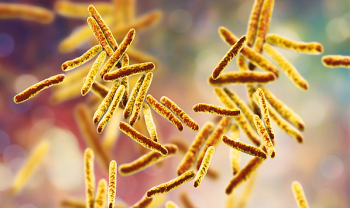
Characteristics of EoE Differ Among Those With Childhood- and Adult-Onset Disease
Despite differing characteristics, patients have similar responses to treatment regardless of when they were diagnosed with eosinophilic esophagitis (EoE).
Although the characteristics of childhood-onset eosinophilic esophagitis (EoE) differ from those seen in adulthood-onset EoE, these patients have similar responses to treatments, according to findings
EoE is a chronic inflammatory immunity-driven disease. The inflammation in the esophagus is triggered by a high number of eosinophils due to certain foods or airborne antigens. Research has found the prevalence of EoE increases as children age and peaks in the 20- to 24-year-old age group and the 35- to 39-year-old age group. However, the researchers noted increasing incidence of EoE being diagnosed in childhood.
“Although EoE is considered a single disease across the age range, differences have been reported among children and adults, especially in clinical presentation and endoscopic features,” they wrote.
Using EoE CONNECT, a prospectively maintained registry containing a large population-based cohort of European patients with EoE, the researchers compared the characteristics of patients diagnosed with EoE during childhood compared with those diagnosed in adulthood, the first-line therapeutic approach and responses in patients by age group (younger than 18 years versus 18 years and older).
Overall, 1298 patients with EoE were included in the study with 1044 patients in the adulthood-onset cohort and 254 patients in the childhood-onset cohort. The mean age at diagnosis was 11.9 years (0.7-17.9 years) in the pediatric cohort and 38.2 years (18.0-89.7 years) in the adult cohort. The median diagnostic delay was 1 year for the pediatric cohort and 2.7 years for the adult cohort.
In both cohorts, the patients were mostly male (84.1% in the pediatric cohort and 76.8% in the adult cohort). Interestingly, the male to female ratio reduced as age at diagnosis increased: the ratio was 4.9:1 for patients younger than 12 years; 3.8:1 to for patients 12 to 17 years; 3.4:1 for patients 18 to 59 years; and 1.7:1 for patients 60 years and older.
For both adults (86.6%) and pediatrics (75.4%), proton-pump inhibitors (PPIs) were most commonly used as the first-line anti-inflammatory treatment. Patients in the pediatric cohort were more likely to start on dietary treatment (12.1%) than patients in the adult cohort (5.9%). Pediatric patients were also more likely (12.5%) to start on swallowed topical corticosteroids (STCs) than adult patients (7.5%).
Overall clinical response rate to any first-line treatment was 73.3% for pediatrics and 74.1% for adults. There was the greatest similarity between the cohorts for their clinical responses to PPI as a first-line treatment: 72.8% of pediatrics and 72.7% of adults. For dietary treatment (food elimination diet), the pediatric cohort were slightly more likely to have a clinical response: 86.7% of pediatrics versus 78.0% of adults. However, for STC, adults were slightly more likely to have a clinical response: 82.7% vs 73.1%.
Nearly all (95.2%) of patients had at least 1 symptom of EoE registered with no differences between the cohorts. There were 17 potential symptoms included in EoE CONNECT. The childhood-onset cohort was more likely to present with vomiting (19.5% vs 8.7%), chest pain 17.0% vs 9.8%), abdominal pain (13.7% vs 4.0%), slow eating (13.7% vs 9.1%), weight loss (6.6% vs 2.5%), food aversion (6.2% vs 1.3%), and nausea (5.8% vs 2.3%). The adult-onset cohort was more likely to present with dysphagia (82.8% vs 58.5%), food bolus impaction (59.6% vs 46.1%), and heartburn (26.6% vs 19.5%).
The frequency of dysphagia and heartburn increased with age at EoE diagnosis. Patients diagnosed with EoE at 60 years or older suffering from heartburn more commonly than younger adults (40.8% vs 25.9%). Patients diagnosed with EoE during adolescence (12 to 17 years) had more dysphagia than younger patients (under 12 years) (66.4% vs 50.4%).
Overall, in both cohorts, the vast majority had no family EoE background (84% in the pediatric cohort and 91.8% in the adult cohort). However, the proportion of patients with a family background was significantly higher among children compared with adults.
“Importantly, our research identified that the proportion of children with a family background of EoE was significantly higher than that of adults,” the researchers wrote. “This could reflect either a greater awareness in families of the appearance of symptoms in a young member, or that the family grouping of cases implies greater severity of EoE and appearance at a younger age.”
Newsletter
Get the latest industry news, event updates, and more from Managed healthcare Executive.



















































